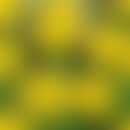Synonym(s)
DefinitionThis section has been translated automatically.
Herb and leaves of stinging nettle. Urticae herba and Uticae folium, monographed by HMPC, Escop and Commission E, are the dried, whole or cut nettle leaves.
HMPC monograph: Traditional-use: Internal: mild aches and pains, urinary tract complaints to increase the amount of urine, for better flushing of the urinary tract. External: seborrheic skin
ESCOP monograph: arthritis, arthrosis and/or rheumatic complaints; improvement of water excretion in inflammation-related complaints of the lower urinary tract
Commission E monograph: rheumatic complaints; irrigation for inflammatory diseases of the urinary tract, irrigation for the prevention and treatment of renal gravel.
IngredientsThis section has been translated automatically.
The fresh plant juice of Herba urticae contains the "nettle poison" acetylcholine as well as histamine, formic, acetic and butyric acid and other organic acids such as the rarely occurring caffeoyl malic acid; also flavonoids, triterpenes, sterols (sterols), carotene, vitamin C and chlorophyll, coumarins.
You might also be interested in
EffectsThis section has been translated automatically.
Diuretic, antiphlogistic (especially caffeoyl malic acid), immunomodulating. The polyphenols contained inhibit the enzyme cyclooxygenase and thus the inflammatory cascade, as well as the release of pro-inflammatory cytokines.
Field of application/useThis section has been translated automatically.
DosageThis section has been translated automatically.
Average daily dose 8-112g drug for infusions and other preparations.
Nettle spirit is taken for external use.
ContraindicationThis section has been translated automatically.
Allergy to any of the ingredients. Internally no sufficient data for children and adolescents under 12 years, externally however suitable. No sufficient data for pregnancy and lactation.
Trade namesThis section has been translated automatically.
Combudoron® Jelly, Species Sclero-Diabeticum
LiteratureThis section has been translated automatically.
- Chrubasik S et al. (1997) Evidence for antirheumatic effectiveness of Herba Urticae dioicae in acute arthritis: A pilot study. Phytomedicine 4:105-108.
- Wolska J et al. (2015) The influence of stinging nettle (Urtica dioica L.) extracts on the activity of catalase in THP1 monocytes/macrophages. Pomeranian J Life Sci 61:315-318.
- https://www.ema.europa.eu/en/documents/herbal-monograph/final-community-herbal-monograph-urtica-dioica-l-urtica-urens-l-herba_en.pdf
- https://arzneipflanzenlexikon.info/brennnessel.php
- Wenigmann M. (2017) Phytotherapy medicinal drugs, phytopharmaceuticals, application. Urban & Fischer, p. 87-88
- https://www.awl.ch/heilpflanzen/urtica_dioica/brennessel.htm




